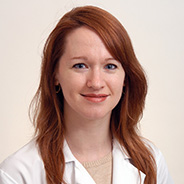Theme: Implementing the new research ideas to eradicate pancreatic cancers
Pancreas 2022
Global Summit on Pancreas, Gastroenterology and Digestive Diseases is delighted to spread an invitation to all of you to join the meeting (Hybrid event) which will be held in Budapest, Hungary on January 09-10, 2024. Seminars, symposiums, and workshops on the most recent therapeutic growths for a number of pancreatic diseases, as well as talks by well-known surgeons, gastroenterologists, endocrinologists, and a lot of passionate young researchers, will be part of the session activities.
The program will include a variety of presentations selected from submitted abstracts to illustrate the growth and diversity of pancreatic cancer research. Special workshops presenting cutting-edge research, career development opportunities, and debating field controversies will be exciting for both new and established investigators. Make your plans today to be present at this exciting conference.
Conference Opportunities
For Researchers and Faculty Members
- Speaker Presentation
- Poster Display
- Symposium hosting (4-5 member team)
- Workshops
Track 1: Pancreas
The body's glands are organs that manufacture and hide away chemicals. Two primary responsibilities are allowed out by the pancreas: Produces chemicals (enzymes) that aid in digesting as part of this one exocrine function. Function of the endocrine system: Issues hormones that control blood sugar levels. In the upper left abdomen, behind the stomach, is somewhere the pancreas is located. Other organs such as the liver, spleen, and small intestine set it. It is spongy, six to ten inches extended, and shaped like a fish stretched out horizontally over the abdomen or a flat pear.
- Lipase
- Amylase
- Protease
Track 2: Gastrointestinal Oncology
The Gastrointestinal Oncology be attentive in the diagnosis and multidisciplinary management of patients with pre-cancerous and cancerous situations involving the esophagus, stomach, small intestine, colon, rectum, pancreas, retro peritoneum, and other intra-abdominal organs. Smoking is a danger factor. A diet from head to foot in animal fat, alcohol use, and chronic pancreatitis may all be risk factors. Hereditary pancreatitis patients are further likely to develop pancreatic cancer than the general population.
- Anal cancer
- Bile duct cancer
- Colon cancer
- Esophageal cancer
- Gallbladder cancer
- Gastrointestinal stromal tumors
- Liver cancer
- Pancreatic cancer
Track 3: Hereditary pancreatitis
Multiple chapters of pancreatic inflammation (pancreatitis), a thoughtful condition affecting the digestive system, are brought on by hereditary pancreatitis. typically; symptoms start in first childhood and can linger for a small number of days or more. Stomach pain, gaseousness, and vomiting are likely symptoms. Chronic pancreatitis, or a pancreas that is regularly inflamed, develops in people with hereditary pancreatitis. Symptoms of this contain greasy stools, weight loss, and inadequate nutrient absorption from diet. The danger of type 1 diabetes and pancreatic cancer is advanced in adults with hereditary pancreatitis.
Track 4: Digestive diseases
Bleeding, bloating, constipation, diarrhea, heartburn, uneasiness, nausea, and vomiting are the most characteristic symptoms of digestive disorders. Gastroesophageal reflux disease, appendicitis, irritable bowel syndrome, lactose intolerance, and peptic ulcers (Stomach Ulcers) are in the middle of the common digestive problems.
- Gastrointestinal Reflux Disease (GERD)
- Gastroesophageal reflux disease (GERD)
- Celiac Disease
- Irritable Bowel Syndrome (IBS)
- Ulcerative Colitis
- Crohn's Disease
Track 5: Autoimmune liver diseases
When the immune system of the form targets the liver, it can outcome in inflammation and autoimmune liver diseases. If the liver inflammation is not lectured, it could eventually result in cirrhosis, which might cause liver cancer and liver failure.
The three most prevalent autoimmune liver diseases are autoimmune hepatitis, primary biliary cholangitis, and main sclerosing cholangitis, despite the detail that a variety of autoimmune ailments can affect the liver. These ailments can manifest by yourself or as a component of "overlap" illnesses.
- Autoimmune hepatitis (AIH)
- Primary biliary cholangitis (PBC)
- Primary sclerosing cholangitis (PSC)
Track 6: Acute and Chronic pancreatitis
Inflammation of the pancreas is a typical of pancreatitis. Although it can cause serious consequences that can be fatal, this disorder can also be benign and self-limiting. The lungs and kidneys are only two of the other body organs that the acute form of pancreatitis can damage when it is at its worst.
- Acute pancreatitis
- Chronic pancreatitis
Track 7: Pancreatic cancer & chemotherapy for pancreatic cancer
Pancreatic adenocarcinoma, an exocrine tumour creating from the cells lining the pancreatic duct, is the most prevalent kind of pancreatic cancer. Less than 5% of pancreatic cancers are endocrine tumours, an abundant less frequent variety also known as neuroendocrine or islet cell tumours.
Pancreatic cancer chemotherapy although the key treatment for pancreatic cancer is surgery, many individuals are originally inoperable since the disease has previously spread to their blood vessels. At the Pancreas Center, we use chemotherapy and radiation therapy to decrease tumour size and are able to do surgery on a huge number of patients with locally incurable pancreatic cancer who would not otherwise have a chance at recovery. Each patient's choice to have chemotherapy prior to surgery is complicated, and the surgeons, medical oncologists, radiation oncologists, radiologists, gastroenterologists, and others think through it in a multidisciplinary conference.
Track 8: Whipple Procedure (Pancreaticoduodenectomy)
The most common technique used to treat pancreatic cancer is a Pancreaticoduodenectomy, also known as the Whipple procedure. The process is named for Allen Old father Whipple, who invented it and was formerly chairman of the department of surgery at Columbia University. About 75% of pancreatic cancer tumours are originate at the head of the pancreas, and it is used to treat those. The traditional Whipple and the pylorus-sparing Whipple are the two most popular forms of Whipple surgeries. The traditional Whipple procedure entails the exclusion of the gallbladder, part of the bile duct, the duodenum, and the head of the pancreas.
Track 9: Endoscopic Treatment for Pancreatic Disease
For the diagnosis and treatment of pancreatic illnesses, endoscopic procedures like endoscopic ultrasound (EUS) and endoscopic retrograde cholangiopancreatography (ERCP) are becoming more and more vital. These procedures, when believed out by a capable endoscopist, can get well pancreatic imaging resolution, deliver a trustworthy diagnosis, and exposed the door to slightly invasive treatment choices.
- Endoscopic ultrasound (EUS)
- Endoscopic retrograde Cholangiopancreatography (ERCP)
Track 10: Pancreatic Cysts
Cysts in or on the pancreas that are unusually fluid-filled are known as pancreatic cysts. Please apply the navigation on the left to find a detail about the several forms of cysts, many of which are benign (non-cancerous), and some of which are linked to pancreatitis, or pancreatic inflammation. Serous cystadenomas, mucinous cystadenomas, intraductal papillary mucinous neoplasm (IPMN), and cystically degraded pancreatic neuroendocrine tumours are whole instances of cystic neoplasms of the pancreas. The checkup, diagnosis, and treatment for each of these categories of pancreatic cysts will be enclosed in this section.
Track 11: Gastrointestinal hormones in health and diseases
Polypeptides are the main kind of gastrointestinal (GI) hormones, which are made in and secreted by particular gut endocrine cells. Chemical transmitters produced by these cells show a role in GI motility, secretion, absorption, growing, development, and the control of food intake. The enteric and central nervous systems together include a large number of the peptides that are found in the GI tract. Here, an overall discussion of the synthesis, secretion, and control of GI peptides, as well as their function in the development of disease and clinical usage, will be provided. The control and purposes of the many GI peptides are covered individually.
Track 12: Inflammatory bowel disease
The situation when the tissues in your digestive tract have experienced persistent (chronic) inflammation is mentioned to as "inflammatory bowel disease" (IBD). There are many kinds of IBD. IBD, particularly ulcerative colitis, also raises the risk of colon cancer. IBD can also affect other organs. For example, someone with IBD might have arthritis, skin conditions, inflammation of the eye, liver and kidney disorders, or bone loss.
- Ulcerative colitis
- Crohn's disease
Track 13: Viral gastroenteritis
An inflammation of the lining of your digestive tract is identified as viral gastroenteritis. Adenovirus, norovirus, and rotavirus are more or less of its potential causes. Rotavirus vaccinations are obtainable for infants. Vomiting, diarrhea, and nausea are signs of viral gastroenteritis. Although gastroenteritis is often referred to as "the stomach flu," it is not the same as influenza. Only your respiratory system, including your nose, throat, and lungs, is squeezed by the flu (influenza). In contrast, gastroenteritis touches your intestines.
- Rotaviruses
- Noroviruses
- Adenoviruses
- Sapoviruses
- Astroviruses
Track 14: Neurogastroenterology
Neurogastroenterology is the study of the association between the nervous and digestive systems. One vital GI function regulated by the neurological system is motility, or the coordination of muscles that transfer food through the digestive tract from swallowing to faeces. The term "motility disorders" denotes to a wide spectrum of gastrointestinal problems.
- Difficult swallowing
- Nausea
- Vomiting
- Recurrent abdominal pain
- Constipation
Track 15: Gene Expression in Liver
Hepatocytes express the majority of the linked liver-specific proteins, which are then unconfined into the bloodstream to create plasma proteins. Other liver-specific proteins have liver enzymes such as HAO1 and RDH16, bile-producing proteins such as BAAT and SLC27A5, and drug carrier proteins such as ABCB11 and SLC2A2. The fibrinogen beta chain proteins, apolipoprotein A II, coagulation factors F2 and F9, complement factor linked proteins, and apolipoprotein A II are all liver-specific proteins. 20,000 protein-coding genes are expressed in human cells, with 60 percentage of these genes expressed in a typical adult liver. In the liver, about 400 genes are expressed further in detail, with 150 of them being exceedingly specific to liver tissue.
Track 16: Pediatric Gastroenterology
The most common gastrointestinal (GI) ailments seen by a pediatrician contain abdominal pain, diarrhea, vomiting, constipation, failure to gain weight, and feeding problems. Gastroenteritis (or gastro) is a bowel infection that causes diarrhea and sometimes vomiting. Diarrhea is runny, watery bowel motions. Vomiting might settle quickly, but diarrhea possibly last up to 10 days. Bouts of gastro can cause dehydration, which can be risky for very young babies.
Gastrointestinal disorders can affect neonates and infants:
- Gastroesophageal reflux
- Hypertrophic pyloric stenosis
- Intussusception
- Meconium ileus
- Meconium plug syndrome
- Necrotizing enterocolitis
- Neonatal cholestasis
Track 17: Gastrointestinal Genetics and Immunology
Gastrointestinal illnesses are often hereditary, so it's significant to be aware of any potential risks. If you do have a family past of gut problems, there are steps you can take to decrease your risk of developing them yourself. These disorders contain inflammatory bowel disease (IBD), coeliac disease, GI vasculitis, eosinophilic gastroenteritis, definite monogenic disorders, sarcoidosis, immune checkpoint inhibitorâ€induced colitis (ICI colitis), and microscopic colitis.
Track 18: Gastrointestinal Endoscopy
An endoscopy is a very harmless procedure. Rare complications contain: Your risk of bleeding problems after an endoscopy is increased if the procedure includes removing a piece of tissue for testing (biopsy) or treating a digestive system problem. Your gastroenterologist may recommend that you get an endoscopy if you are dealing by means of: Unsolved abdominal pain. Persistent bowel deviations (diarrhea; constipation) chronic heartburn or chest pain.
Track 19: Pancreatic Necrosis
Treatments aim the pancreatitis itself and then the dead or infected tissue. With timely, proper treatment, a person who has had necrotizing pancreatitis should mark a full recovery. While contrast is necessary to notice pancreatic necrosis with CT, MRI can detect necrosis without the need for contrast in patients with acute kidney damage or severe chronic kidney disease. Antibiotics are mandatory, and drainage of the necrotic area may also be necessary. If the dead pancreatic tissue turn out to be infected, surgery is typically necessary. The procedure normally includes using a catheter to drain fluids, followed by an endoscopic necrosectomy.
Track 20: Advanced Pancreatitis Treatment
EUS-guided celiac plexus block (CPB) or celiac plexus neurolysis (CPN) is used to decrease the extremely disabling pain related with chronic pancreatitis or pancreatic cancer. CPB is a temporizing treatment, most generally injection of a local anesthetic together with a corticosteroid.
Advantages of Participating at our Webinar
- The advantages of the Speaker and abstract pages are created in Google on your profile under your name would get worldwide visibility.
- Our comprehensive online advertising attracts 30000+ users and 50000+ views to our Library of Abstracts, which takes researchers and speakers to our webinar.
- Meet with hundreds of like-minded experts who are pioneers in pancreas and share ideas.
- All participants in the webinar would have a different reason to participate with eminent speakers and renowned keynote speakers in one-to-one meetings.
- A rare opportunity to listen what the world's experts are learning about from the world's most influential researchers in the area of gastroenterology at our Keynote sessions.
- Pancreas Summit intensive webinar schedule, you will acquire experience and expertise in strategic gift preparation that is worth its weight golf, forming an impressive array of recognized professionals.
- Best Poster Award nominations.
- Award for Outstanding Young Researcher.
- Group Registration Advantages.
Benefits of Participation for Speaker
- Worldwide appreciation of the profile of Researchers.
- Obtain credits for professional growth.
- Explore the latest of cutting edge analysis.
- Make long-term bonds at social and networking activities.
- An ability to advertise one page in the distribution of abstract books and flyers that ultimately gets 1 million views and adds great value to your research profile.
- Learn a transition beyond your area of interest to learn more about new subjects and studies away from your core subject of pancreas.
- We have distinctive networking, learning and enjoyable integration into a single package.
Benefits of Participation for Delegate
- Professional Development-Improve understanding and knowledge.
- Attendance at webinars supports rejuvenates and energizes delegates.
- Your involvement in our webinar will help with a new methodology and ideology that can be used to broaden the outcomes of businesses or industries.
- Opportunities for Neuro Summit researchers and experts in the same field to meet and exchange new ideas through an online webinar.
Benefit of Participation for Sponsor
- Exposure to the international environment would increase the possibility of new companies.
- Opportunity to demonstrate your company's latest technologies, new products, or service your business to a wide range of international participants.
- Increase business by our webinar participants through lead generation.
- It takes a lot of time, effort and drive to create a successful company, so it's always nice to have a network of colleagues and associates to draw energy from individuals who share a common drive and objective.
- Webinars in neurology provide opportunities for more attention and contemplation that could help you move your company to the next stage.
- Benchmarking main organization plans and moving it forward.
- Get feedback from trustworthy people at our webinar to your company questions and challenges.
- On our webinar banner, website and other proceedings, branding and marketing content, the advertising logo of your company.
Benefit of Association for Collaborators
- Nobody has these massive visitors to pancreas in the world; this is the best forum to highlight society.
- Creating long-lasting peer relationships.
- In our webinar banner, website and other proceedings, branding and marketing material, promotional content and your Organization logo will increase your number of subscribers/members by 40%.
- The exposure of our event to your Company listing in the Global Business forum will have a great effect on your association.
- Your representatives can network to update their knowledge and understanding of your organization and services with key webinar delegates.
- Neurology advertising materials such as posters, brochures, pamphlets, services that will be circulated to hospitals, universities, society and researchers will be integrated with information.
Market Size and Growth:
The worldwide pancreatic cancer market was esteemed at USD 2.32 billion in 2021 and is expected to grow at a CAGR of 13.8% during the forecast period. The market is estimated to develop as tobacco consumption and the number of smokers increases. Additionally, factors such as rising alcohol consumption, cumulative rates of obesity, and a rise in awareness of the many treatment choices accessible are forecasting market expansion on a global scale.
Competitive Landscape:
The acute pancreatitis market is temperately fragmented, with some players across the globe. Due to the limited treatment options offered, there is high competition in the market. In terms of market share, a few of the chief players at present rule the market. With the increasing patient awareness ranks and high prevalence of diseases, many regional players are expected to be part of the acute pancreatitis market over the forecast period. Some of the leading players in the market are Abbott Laboratories, Pfizer Inc., Merck & Co., Inc., GlaxoSmithKline, Baxter International Inc., Fresenius SE & Co. KGaA, Dynavax Technologies Corporation, B. Braun SE, and others.
AcelRx Pharmaceuticals, Inc. offered comparative data between two different dialysis circuit anticoagulants, Nafamostat and citrate anticoagulation (RCA), in pediatric patients undertaking continuous renal replacement therapy (CRRT). Nafamostat is a serine protease inhibitor used to delight acute pancreatitis.
Technology Trends:
As per the International Diabetes Federation, Diabetes Atlas 10th edition, 2021 report, the number of adults (20–79 years) by means of diabetes was 536.6 million in 2021 and it is likely to reach 783.2 million by 2045. The occurrence of diabetes worldwide was 10.5% in 2021 and is expected to be 12.2% in 2045. As per the related report, the number of predominant cases of type 1 diabetes in children and adolescents (0–19 years) was 1,211,900, and the extent of new cases in the same age group was 149,500 in 2021. Thus, considering the talk about facts and key drivers, the artificial pancreas device system market is anticipated to propel over the projection period.
Market Opportunities and Challenges:
Increase in the number of research and development activities:
Moreover, the market's growth is powered by investment for the development of advanced technologies and rise in the number of emerging markets. These factors will provide useful opportunities for the pancreatitis market growth.
The lack of healthcare infrastructure in mounting economies and firm regulatory scenario will challenge the pancreatitis market. Additionally, lack of awareness between people and poor reimbursement policies will act as restrain and more impede the growth rate of market during the forecast period of 2022-2029.
Conference Highlights
- Pancreas
- Gastrointestinal Oncology
- Hereditary pancreatitis
- Digestive diseases
- Autoimmune liver diseases
- Acute and Chronic pancreatitis
- Pancreatic cancer & chemotherapy for pancreatic cancer
- Whipple Procedure (Pancreaticoduodenectomy)
- Endoscopic Treatment for Pancreatic Disease
- Pancreatic Cysts
- Gastrointestinal hormones in health and diseases
- Inflammatory bowel disease
- Viral gastroenteritis
- Neurogastroenterology
- Gene Expression in Liver
- Pediatric Gastroenterology
- Gastrointestinal Genetics and Immunology
- Gastrointestinal Endoscopy
- Pancreatic Necrosis
- Advanced Pancreatitis Treatment
To share your views and research, please click here to register for the Conference.
To Collaborate Scientific Professionals around the World
| Conference Date | January 09-10, 2023 | ||
| Sponsors & Exhibitors |
|
||
| Speaker Opportunity Closed | |||
| Poster Opportunity Closed | Click Here to View | ||
Useful Links
Special Issues
All accepted abstracts will be published in respective Our International Journals.
- Pancreatic Disorders & Therapy
- Research and Reports in Gastroenterology
- Journal of Gastroenterology and Digestive Diseases
Abstracts will be provided with Digital Object Identifier by










































